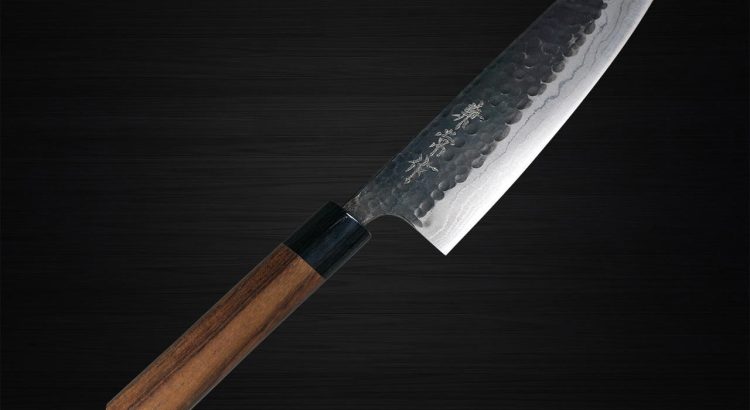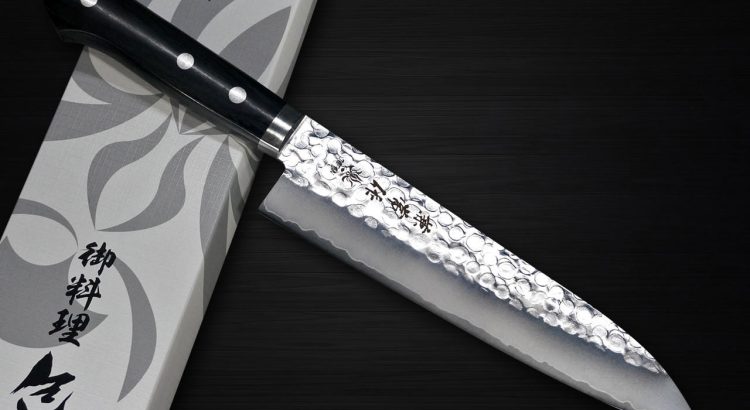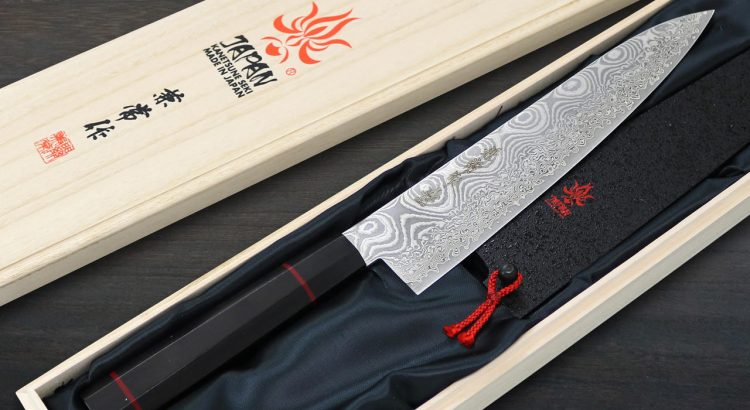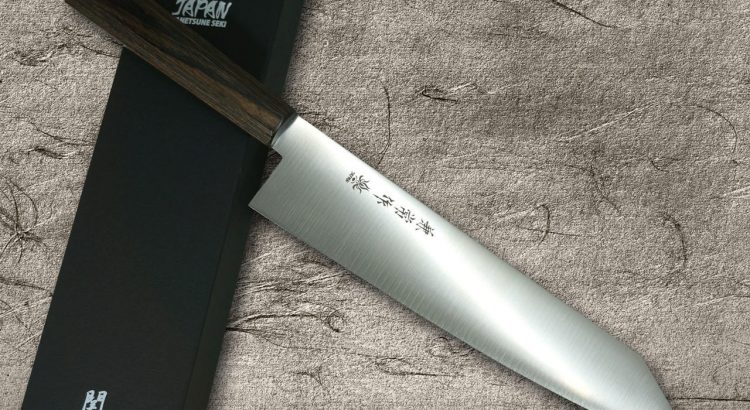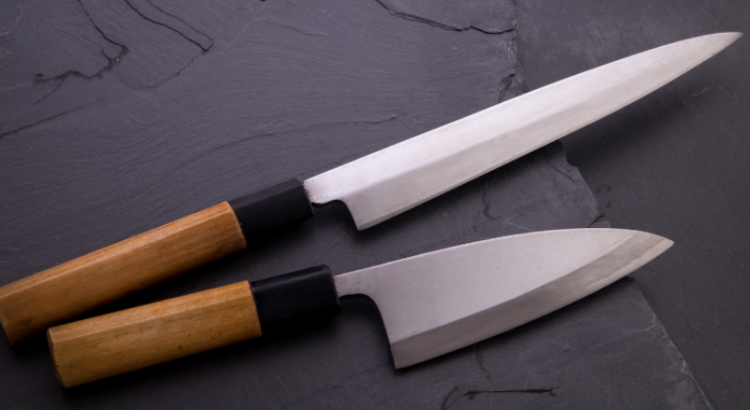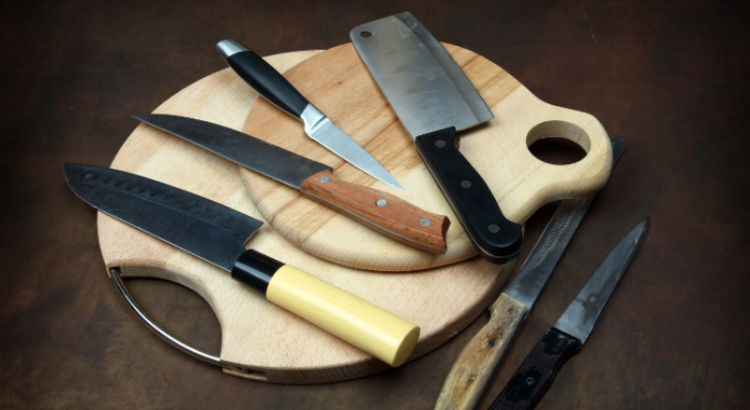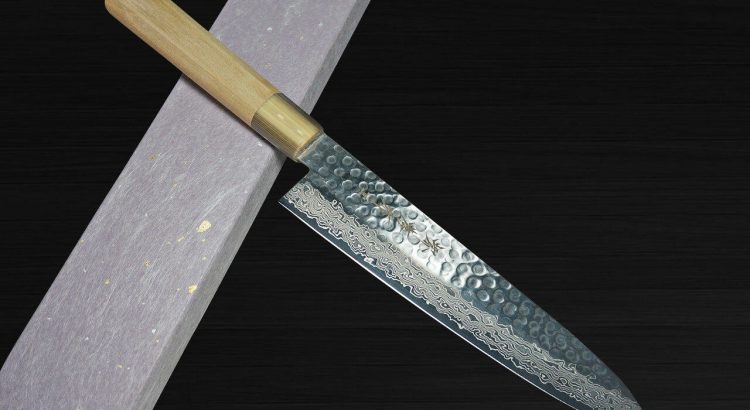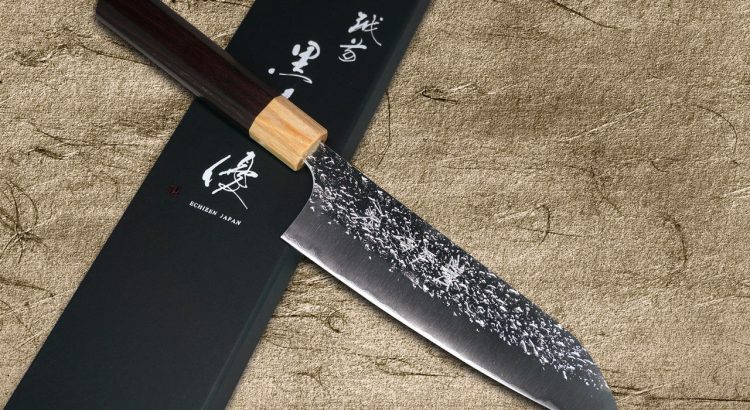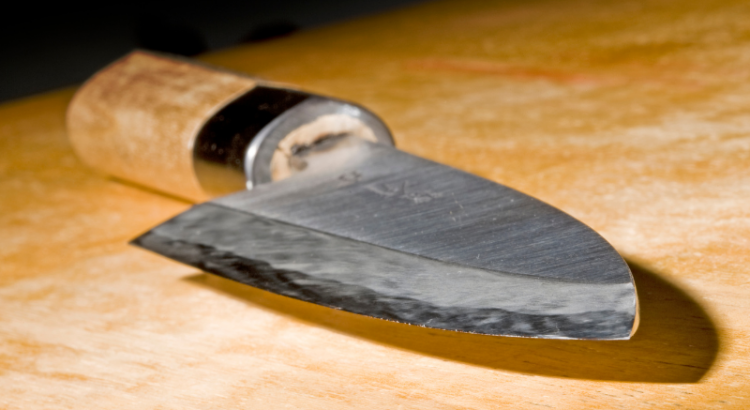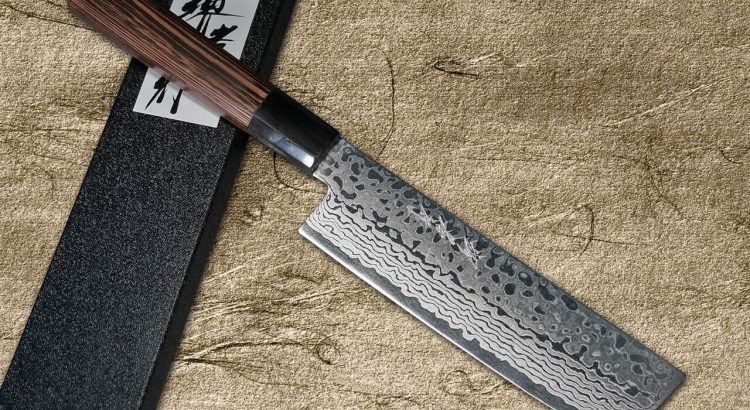img by : hocho-knife.com
The Kanetsune KC-930, featuring Aogami No.2 steel and a Damascus Kurouchi finish, is a knife that beautifully merges traditional Japanese craftsmanship with modern aesthetics and functionality. Here’s a detailed review of this exquisite piece:
Blade Quality and Material:
At the heart of the KC-930 lies the Aogami No.2 steel, known for its superior edge retention, durability, and ability to achieve a razor-sharp edge. This high-carbon steel core is encased in layers of softer stainless steel, creating a striking Damascus pattern that is not only beautiful but also functional, providing added strength and flexibility to the blade.
Kurouchi Finish:
The knife boasts a Kurouchi, or “blacksmith’s finish,” which is a traditional, rustic look that reduces reflectivity and helps protect the carbon steel core from rust and corrosion. This finish gives each knife a unique, artisanal appearance, reflecting the individual craftsmanship that goes into its creation.
Sharpness:
True to the reputation of Kanetsune and the capabilities of Aogami No.2 steel, the KC-930 is incredibly sharp, making it a pleasure to use for precision cutting tasks. The edge is keenly honed, allowing for thin slicing and meticulous chopping with ease.
Handle Design:
The handle is crafted to complement the traditional aesthetic of the knife while ensuring modern ergonomics. It is designed for comfort and control, providing a secure grip that enhances the cutting experience, making the knife an extension of the chef’s hand.
Balance and Weight:
The Kanetsune KC-930 is well-balanced, with a weight distribution that makes it feel both substantial and agile. This balance facilitates precise control over the blade, reducing fatigue during prolonged use and enabling intricate cuts.
Durability and Maintenance:
With proper care, including regular sharpening on a high-quality whetstone and protection from moisture and acidity, the KC-930 can maintain its exceptional performance for years. The Damascus and Kurouchi finishes not only add to the knife’s aesthetic appeal but also contribute to its longevity.
Versatility:
While designed with traditional Japanese cuisine in mind, the Kanetsune KC-930’s sharpness and size make it versatile for a range of culinary tasks, from slicing vegetables to preparing meats and fish.
Aesthetic Appeal:
The combination of the Damascus pattern and Kurouchi finish makes this knife a standout piece in any kitchen. It is a functional work of art that embodies the fusion of traditional techniques and contemporary design.
In conclusion, the Kanetsune KC-930 Aogami No.2 Damascus Kurouchi is a remarkable knife that offers professional chefs and culinary enthusiasts a perfect blend of form, function, and tradition. Its superior materials, craftsmanship, and performance make it a valuable and beautiful tool in the culinary arsenal.
